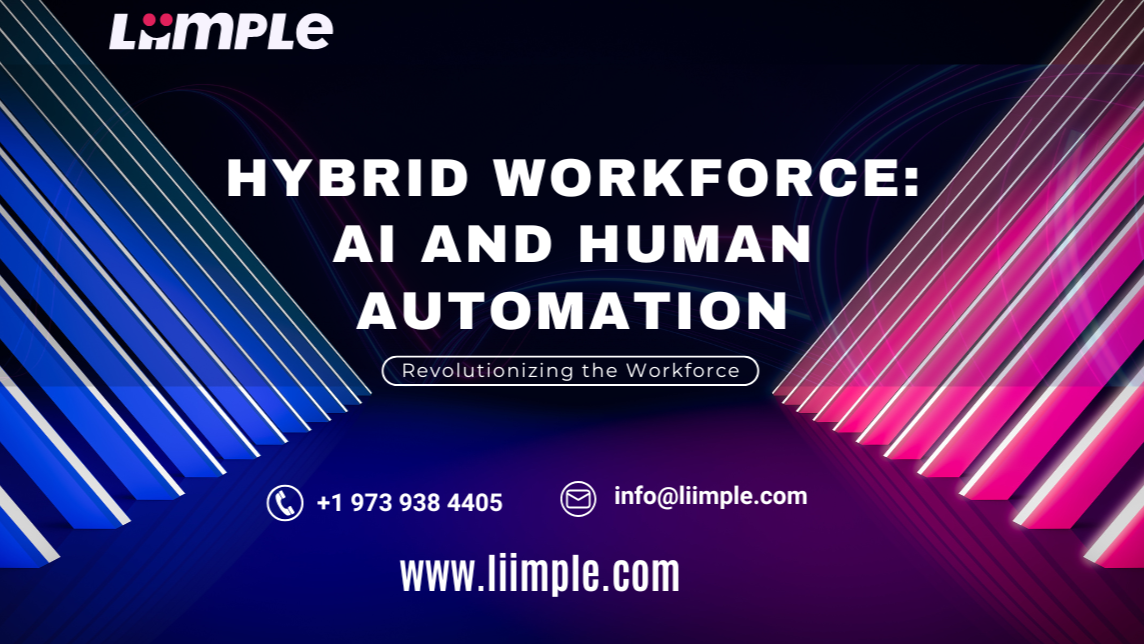The modern workplace is undergoing a transformation unlike anything seen before. The rapid advancements in artificial intelligence (AI) are not replacing human jobs but instead redefining them, giving rise to a new era—the hybrid workforce. In the USA, industries are increasingly integrating AI-driven solutions alongside human expertise, enhancing productivity, efficiency, and innovation.
What is a Hybrid Workforce?
A hybrid workforce is a model where humans and AI-powered technologies collaborate to achieve business goals. This workforce does not just refer to remote and in-office employees but also includes the seamless interaction between human intelligence and AI systems. From AI-powered chatbots assisting customer service representatives to predictive analytics guiding financial decisions, AI is enhancing human capabilities rather than replacing them.
The Evolution of the Hybrid Workforce in the USA
The hybrid workforce in the USA has gained significant traction over the past decade, fueled by advancements in AI, cloud computing, and automation. According to a recent report by McKinsey, nearly 50% of business leaders in the USA have already incorporated AI into their workflows, with many expecting even greater adoption in the coming years.
Several factors are driving this shift:
- Labor Market Challenges – With a shortage of skilled workers in sectors like healthcare, manufacturing, and cybersecurity, AI is helping fill gaps by automating repetitive tasks and assisting employees with complex decision-making.
- The Digital Transformation Boom – Companies across industries are accelerating digital adoption, making AI-powered tools essential for maintaining a competitive edge.
- Remote and Hybrid Work Trends – AI-driven collaboration tools, virtual assistants, and automated workflows are enabling smoother remote work experiences.
How AI is Enhancing Productivity in the Hybrid Workforce
AI is being used across various industries to streamline operations and boost efficiency. Here’s how different sectors are leveraging AI to build a productive hybrid workforce in the USA:
1. Healthcare: AI-Assisted Diagnosis and Personalized Treatment
Doctors and medical professionals are now working alongside AI-powered diagnostic tools to detect diseases faster and with greater accuracy. AI algorithms analyze medical scans, identify anomalies, and suggest possible diagnoses, allowing doctors to make more informed decisions. Additionally, AI-driven wearables are helping patients monitor their health in real time, reducing hospital visits.
2. Finance: Smarter Decision-Making with AI
In the finance sector, AI-powered analytics are helping businesses make better investment decisions, detect fraudulent activities, and optimize risk management strategies. AI-driven chatbots assist in handling customer queries, freeing up human employees to focus on more complex financial planning and advisory services.
3. Manufacturing: Automation Meets Human Expertise
The manufacturing industry is seeing an increase in AI-powered robots working alongside human employees. While machines handle repetitive and physically demanding tasks, humans oversee operations, troubleshoot issues, and ensure quality control. This synergy is boosting productivity and reducing workplace injuries.
4. Retail: Enhancing Customer Experience
Retailers in the USA are using AI-driven tools to personalize shopping experiences, optimize inventory management, and predict consumer trends. AI-powered recommendation engines help customers find products they like, while AI-assisted cashiers speed up checkout processes.
Challenges of the Hybrid Workforce
While the benefits of AI-human collaboration are clear, the rise of the hybrid workforce in the USA also presents challenges:
- Workforce Upskilling – As AI automates repetitive tasks, employees need to acquire new skills to remain relevant in a tech-driven work environment. Companies must invest in reskilling and training programs.
- Ethical and Bias Concerns – AI systems can sometimes reinforce biases in hiring, decision-making, and customer interactions. Businesses need to ensure their AI models are ethical and transparent.
- Cybersecurity Risks – With increased reliance on AI and digital tools, organizations must prioritize data security to protect sensitive information from cyber threats.
The Future of the Hybrid Workforce in the USA
As AI technology continues to evolve, the hybrid workforce in the USA will become even more sophisticated. Future trends include:
- AI-Augmented Leadership – Business leaders will use AI-powered analytics to make data-driven decisions and forecast market trends.
- Greater Personalization in Workflows – AI will adapt to employees’ working styles, offering personalized task recommendations and automation.
- Stronger Human-AI Collaboration – AI tools will become more intuitive, making it easier for employees to interact with and benefit from AI without needing technical expertise.
Final Thoughts
The rise of the hybrid workforce in the USA is not about replacing humans with AI but about leveraging AI to amplify human potential. Organizations that successfully integrate AI into their operations will experience increased productivity, improved efficiency, and enhanced innovation.
As businesses navigate this transformation, they must prioritize reskilling employees, ensuring ethical AI practices, and fostering a culture of collaboration between humans and technology. The future of work is not just AI-driven—it’s human and AI-driven together.
